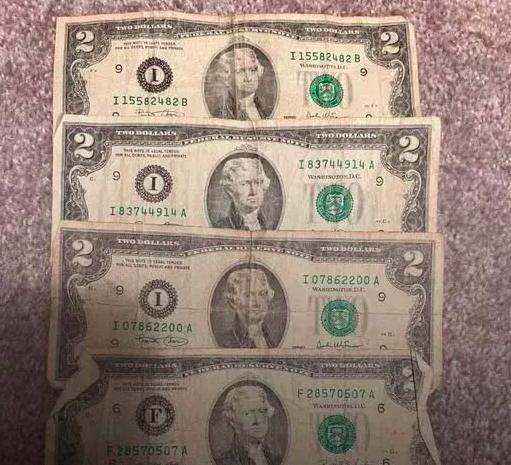Have you ever come across a $2 bill tucked away in your wallet or hidden in a drawer? If so, you might be holding onto something much more valuable than you realize. While $2 bills aren’t as commonly seen in circulation as other denominations, they have a rich history and can be worth a lot more than their face value—especially to collectors.
The History Behind the $2 Bill
The $2 bill has an intriguing history that dates back to 1862, during the height of the Civil War. At that time, the U.S. government introduced the $2 bill to ease the demand for coins, which were in short supply. The first $2 bill featured the portrait of Alexander Hamilton, the nation’s first Secretary of the Treasury, marking the start of what would become a unique and sometimes controversial currency note.
Over the years, the design of the $2 bill has evolved. While it still maintains a connection to history, it has also showcased various important historical figures and landmarks. For example, the reverse side of modern $2 bills famously depicts John Trumbull’s iconic painting of the signing of the Declaration of Independence, a powerful symbol of American history.
Why $2 Bills Aren’t Commonly Circulated
In the early 20th century, $2 bills weren’t widely used in everyday transactions. Their relatively high value for such a small bill led many people to treat them as something to be kept or saved, rather than spent. Because of this, $2 bills were less commonly seen in circulation, and their value often dropped below face value. In fact, for much of the 20th century, $2 bills were considered more of a novelty than a standard form of currency.
However, starting in the 1920s and 1930s, something interesting happened. Collectors started to take an interest in $2 bills, especially those with unique features or historical significance. This growing interest helped boost the value of these bills, and by the 1950s, $2 bills began to hold a bit more appeal among collectors, even though they were still used mainly in low quantities.
The Value of a $2 Bill Today
So, how much is a $2 bill worth now? The value can vary widely depending on a few key factors such as its age, condition, rarity, and any unique markings it might have. For example, a well-preserved $2 bill from the 1950s could be worth more than its face value, especially if it’s part of a limited series or has a rare serial number.
One of the most valuable types of $2 bills is the red seal bills issued in 1953. A $2 bill from this series, particularly one with a star in the serial number (indicating it was a replacement note), can fetch hundreds of dollars—sometimes up to $500 or more in pristine condition. The reason for this is that these bills were printed in relatively low numbers and are now considered rare, making them highly desirable to collectors.
Additionally, some $2 bills from more recent series—especially those with unique serial numbers or misprints—can also be worth more than their face value. A bill with an interesting serial number (such as one with a repeating sequence or low digits) might be worth more, even if it was printed just a few years ago.
How to Determine the Value of Your $2 Bill
If you have a $2 bill in your possession and are curious about its value, there are a few ways to check. First, examine the bill closely to note its condition. Bills that are in excellent condition (with minimal creases, folds, or stains) are generally worth more than those in poor condition.
Next, look for specific features that could make the bill more valuable. These might include:
-
The series year: Older bills or bills from certain years (especially from before the 1960s) can be more valuable.
-
The presence of a star symbol in the serial number: This indicates a replacement note, which is typically rarer and more valuable.
-
Unique or low serial numbers: Bills with low, repeating, or unusual serial numbers are often more sought after.
-
Special prints or misprints: Any printing errors, such as off-center printing or double prints, can add value.
If you believe your $2 bill might be worth more than its face value, consider consulting with a professional currency dealer or appraiser who specializes in rare bills. They can help you determine the bill’s market value and provide more information on how to best preserve it.
Final Thoughts: The Hidden Value of $2 Bills
The $2 bill is more than just an oddity—it’s a fascinating piece of American history and, in some cases, a valuable collectible. So next time you come across one in your wallet or hidden in a drawer, take a moment to inspect it. You might just be holding onto a hidden treasure! Whether it’s a bill from the 1950s with a star in its serial number or a recent print with a quirky feature, the value of a $2 bill might surprise you.
Who knows—your old $2 bill could be worth far more than you ever expected!

Sophia Reynolds is a dedicated journalist and a key contributor to Storyoftheday24.com. With a passion for uncovering compelling stories, Sophia Reynolds delivers insightful, well-researched news across various categories. Known for breaking down complex topics into engaging and accessible content, Sophia Reynolds has built a reputation for accuracy and reliability. With years of experience in the media industry, Sophia Reynolds remains committed to providing readers with timely and trustworthy news, making them a respected voice in modern journalism.
